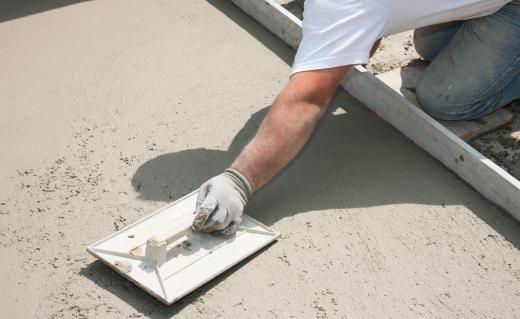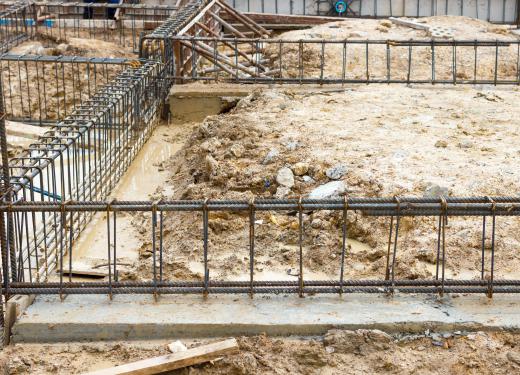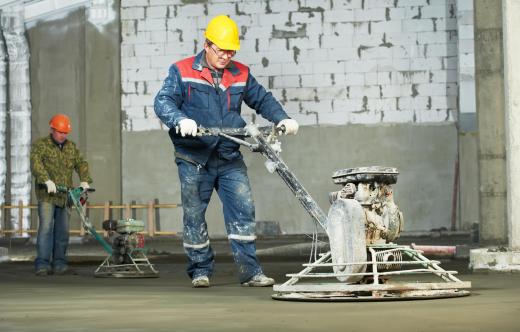Concrete forms are molds which are used to hold concrete in place while it hardens, ensuring that the concrete sets in a specific shape. For people who work with concrete, concrete forms are a critical part of the process. There is a wide variety of concrete forms in use, ranging from custom forms used to make concrete art pieces, to modular mass-produced forms which can be used to produce standard concrete shapes.
Without forms, when concrete is poured, it will pool into a big puddle. Concrete forms are used to hold the concrete in place while it is poured, and to stabilize it as it sets. Once the concrete has set, which can take a varying length of time depending on the size of the concrete pour and the climate, the molds can be removed so that the concrete has a chance to cure. Curing is an important part of the process, ensuring that the concrete is strong and evenly set. After curing, structures can be built on or around the concrete, and other tasks such as painting can be performed.

Concrete forms can be made from wood, plastic, metal, foam, and a variety of other materials, as long as the material is strong enough to withstand the weight and pressure of the concrete. Joints and rough spots in the forms are usually filled in so that they do not leave lines on the concrete, and so that the forms are easier to pull away once the concrete is set. For structural concrete, lengths of rebar or other reinforcement may be mounted inside the forms before the pour begins, so that the concrete sets around the structural support, making it much stronger.

Several companies manufacture generic concrete forms, usually in a modular format which allows people to snap them together. These forms can be used to mold slabs, walls, driveways, and other concrete structures. Depending on the application, the forms may be designed for re-use, as in the case of forms purchased by a contractor for routine use, or they may be single-use forms, lacking the structural integrity needed for repeated uses.

People can also build concrete forms by hand for a specific task. Hand-made forms may also be reusable, depending on the construction technique used. Hand-made forms are used for pours in challenging areas, or for pours which require an unusual shape which cannot be achieved with mass-produced modular forms. Artists who work in concrete also use concrete forms in their work.
A variety on the basic concrete form, the insulating concrete form or ICF, is designed to remain in place after the concrete is poured. These foam concrete forms provide insulation and structural stability to the finished structure, and they cut down on construction time and overall building weight.
Ever since she began contributing to the site several years ago, Mary has embraced the exciting challenge of being a About Mechanics researcher and writer. Mary has a liberal arts degree from Goddard College and spends her free time reading, cooking, and exploring the great outdoors.

